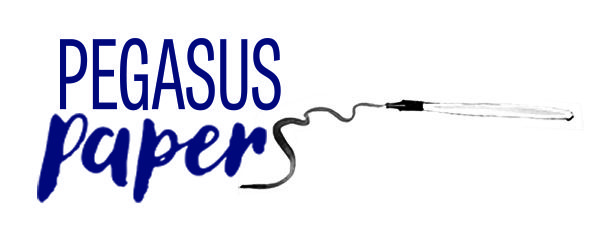How to paint a butterfly with Cath Hodsman – a new workshop!
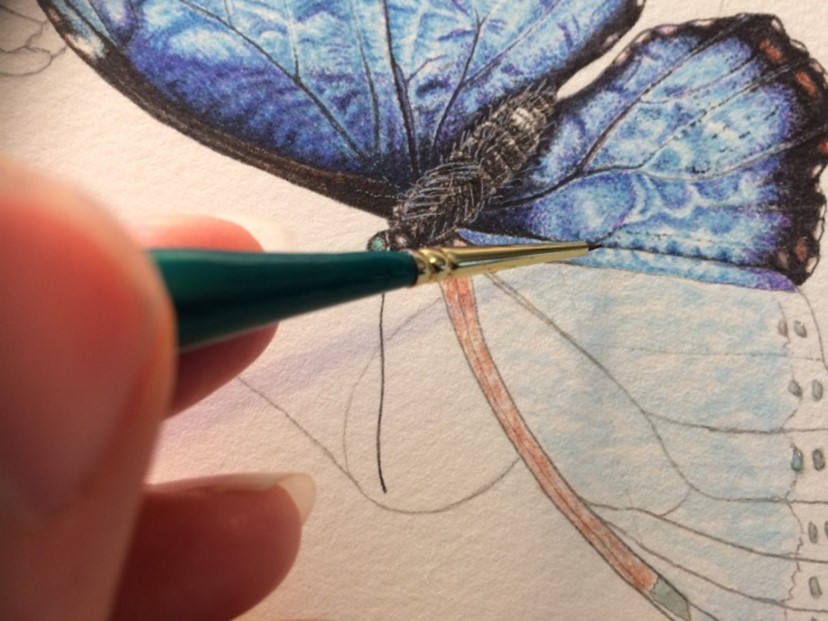
An entomological watercolour workshop with new tutor Cath Hodsman
We are delighted to welcome the well known and respected artist Cath Hodsman to teach a new workshop at Pegasus Art, ‘How to paint a butterfly’. She comes with excellent references and bounds into our shop on a wet and windy day, instantly blowing away our January blues. Her energy and vibrancy are infectious and she soon has me laughing and sharing anecdotes.
But back to the reason she is here…..to show me her beautiful and very detailed entomological paintings, butterfly and moth specimens. Before long I’m drawn into her wonderful insect world as she jumps up to point at the large wall map on our staff room wall to illustrate where the pioneering female entomological artist, Maria Merian (1600’s) sailed to Surinam in South America to study and paint the insect metamorphic lifecycle in a detailed and precise way that had never been done before.
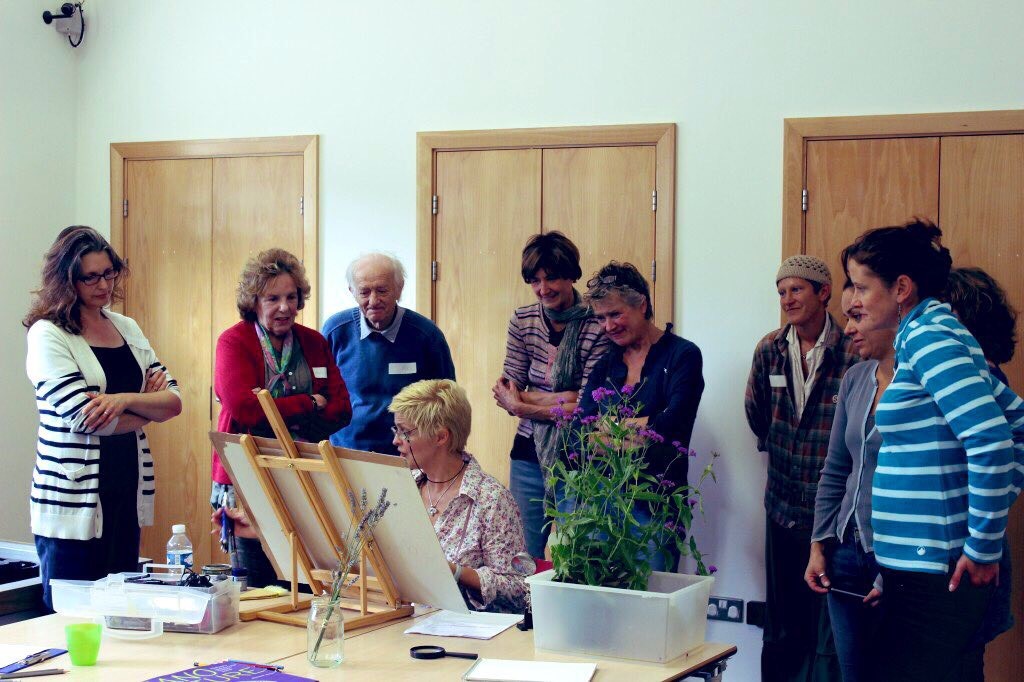
So this workshop is a little bit different to our other painting workshops at Pegasus Art.
Not only is it a painting workshop, it’s also an entomological one. Students will spend some time looking at ‘dead things’ (also, totally ethically sourced specimens) as Cath says, through a microscope, learning about their habits and habitats, studying them closely before attempting to draw and paint them, using watercolours. In exactly the same way as botanical painting is the art of looking closely and drawing very precisely, the same can be said of entomological art.
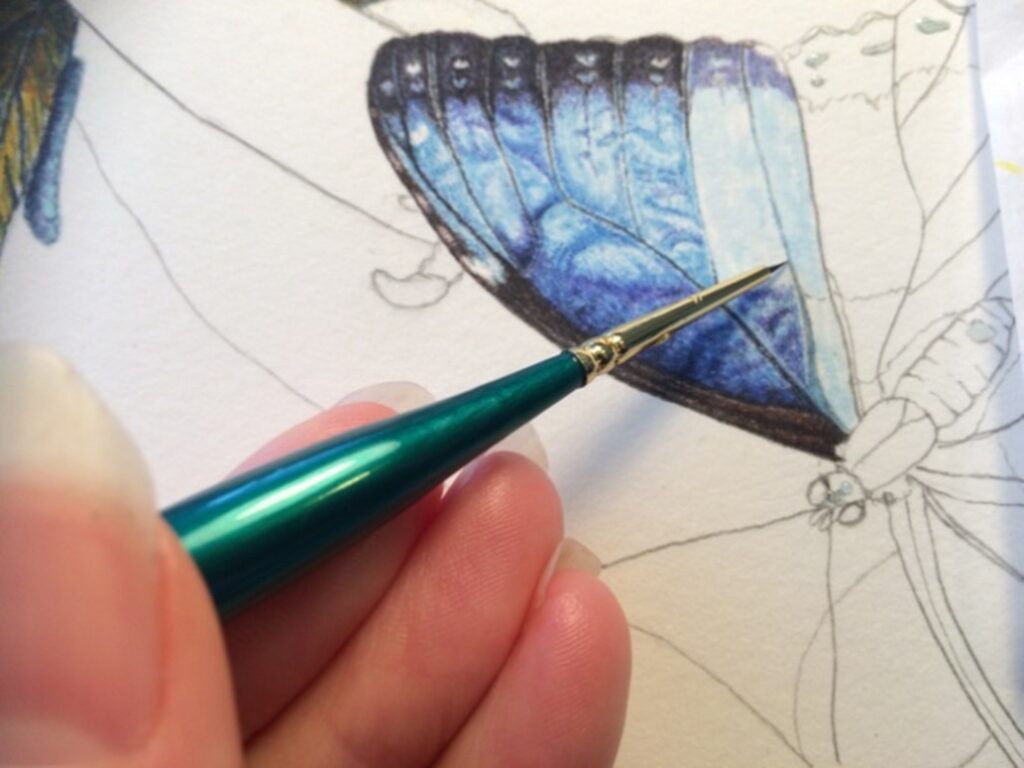
BOOK A PLACE ON THIS WORKSHOP HERE
How to paint a butterfly with Cath Hodsman
Saturday 16th July
10am – 4pm £80
Here’s a snippet of our conversation….
So Cath, how on earth did you get into teaching entomological art?
Well….. I’ve always been arty and always loved the natural word (something I picked up from my Dad) When I expressed a wish to pursue a career as an artist, folks said to me at that time, that I’d never make a living out it, because I was too shy and there was too much competition. I think at this point in my life they were right. You have to be able to sell your ideas, your art and yourself and that usually only comes with age and so I studied Business and Finance at Uni instead of Art…
Years……and years passed by and I still loved to draw and paint and still loved the natural world, especially insects. I also became very interested in nature conservation. Eventually, when my youngest child was old enough to walk to school by herself, (12 years ago) I decided I would have a go at combining the art, the insects and the conservation and go full-time, freelance and see how it all went……. Well, “swap-me-bob”….it took off immediately and I have never looked back. I think that my timing was right too. The world was and still is, at a crossroads in terms of concerns about the health of its ecosystems and the animals that inhabit them, particularly insects and my work fitted into this setting straight away.

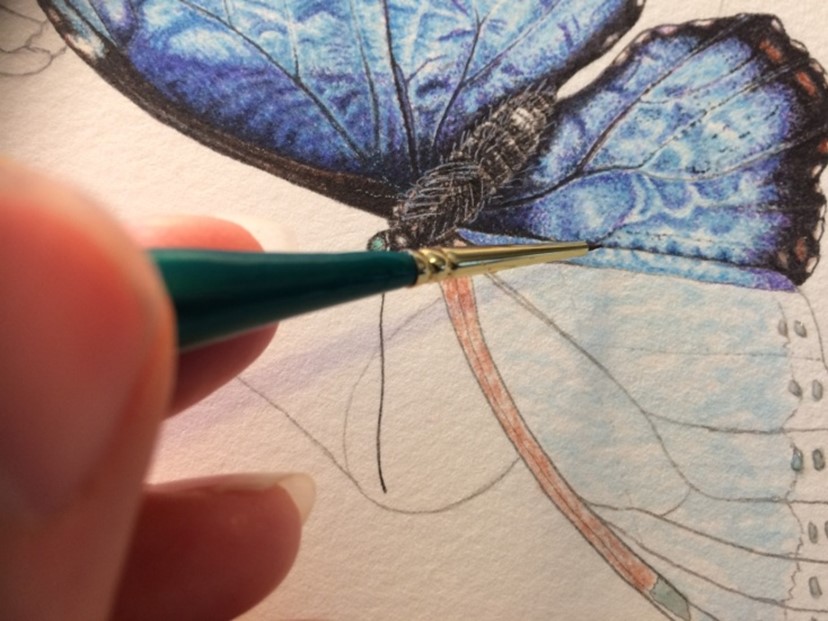
You have so much passion for the subject….what do you want your students to take away from their experience with you?
On every workshop I run I want folks to have fun, first and foremost. So there’s always a LOT of laughter. Secondly, with access to my high-powered microscopes, I turn students into astronauts. But, rather than visit far-away worlds in outer-space, I take them on a journey to visit invisible insect micro worlds that are all around us, in inner-space – Worlds that are so beautiful that folks have often been reduced to tears at what they see. It’s hard to match the beauty and intricacy of the light-refracted wing scales of a beautiful ethereal butterfly.
They also leave my workshops with a deeper connectivity and understanding of the natural world, which overflows into their life after the art. Folks often go out and buy bee houses, plant more wildflowers for pollinating insects and stop mowing their lawns. Yay!….We can all make a huge difference to the health of the natural world through a few simple actions. And finally, they will have had a go at doing a spot of unique and intricate insect painting and spent a day with like-minded souls… A real win-win in my opinion.
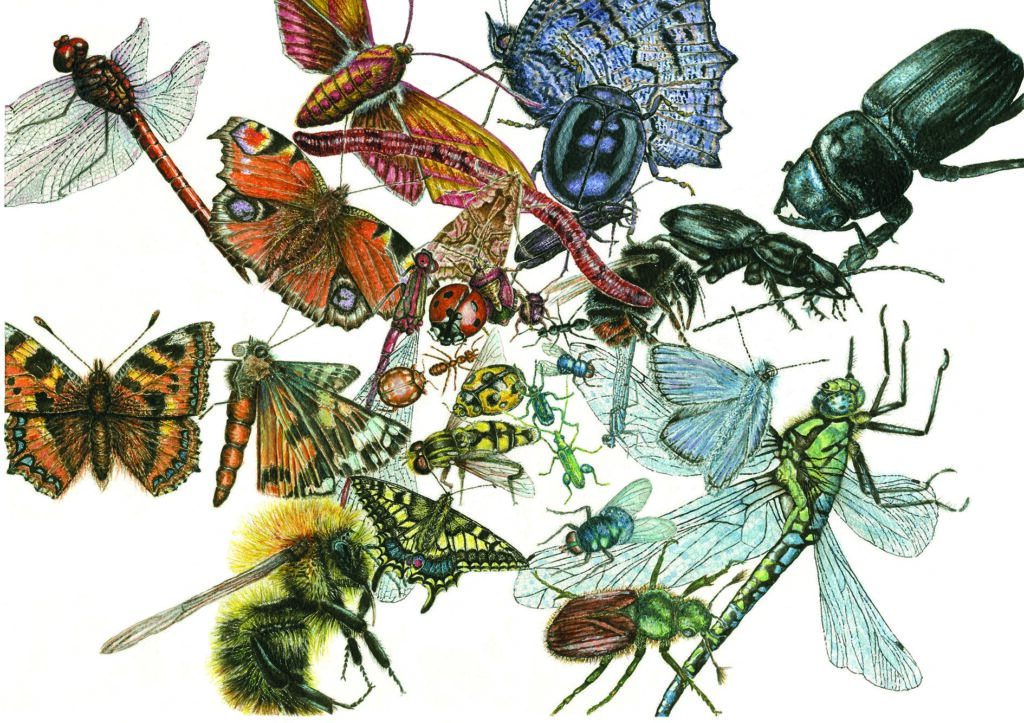
What is your favourite insect and why?
Ooooh, tricky one. First, there’s the obvious answer – bees. What’s not to like about these buzzing pollinating power-houses? There’s over 250 different species of bees in the UK and each and everyone is essential to helping keep life in balance. There are bees as small as a few millimeters and bees as large as the top joint of your thumb. Look out for blue bees, yellow bees, black bees and golden bees….. There are those that live in colonies and those that live on their own. Those that live underground and those that live in wall cavities. They are infinitely interesting, infinitely beautiful, infinitely important…and crying out to be painted.
Secondly, I have a huge soft-spot for big, black, handsome, shiny dung beetles. These poop-scoopers carry out an essential service. World-wide, 100 billion kg of dung is deposited every day (!) and without these lovely beetles in the mix, the world would look very different -They clear up huge amounts of this sticky aromatic organic waste. I live on Minchinhampton Common and without fabulous dung beetles cleaning up after the 700, or so cows that graze it through the summer, the village would be knee-high in poop. They also aerate the soil when they take the dung underground to feed their young and they return essential nutrients to the soil too, keeping it in tip-top condition. Also, they make a tasty and nutritious snack for other animals like foxes and birds. They are definitely the unsung heroes of the insect world.
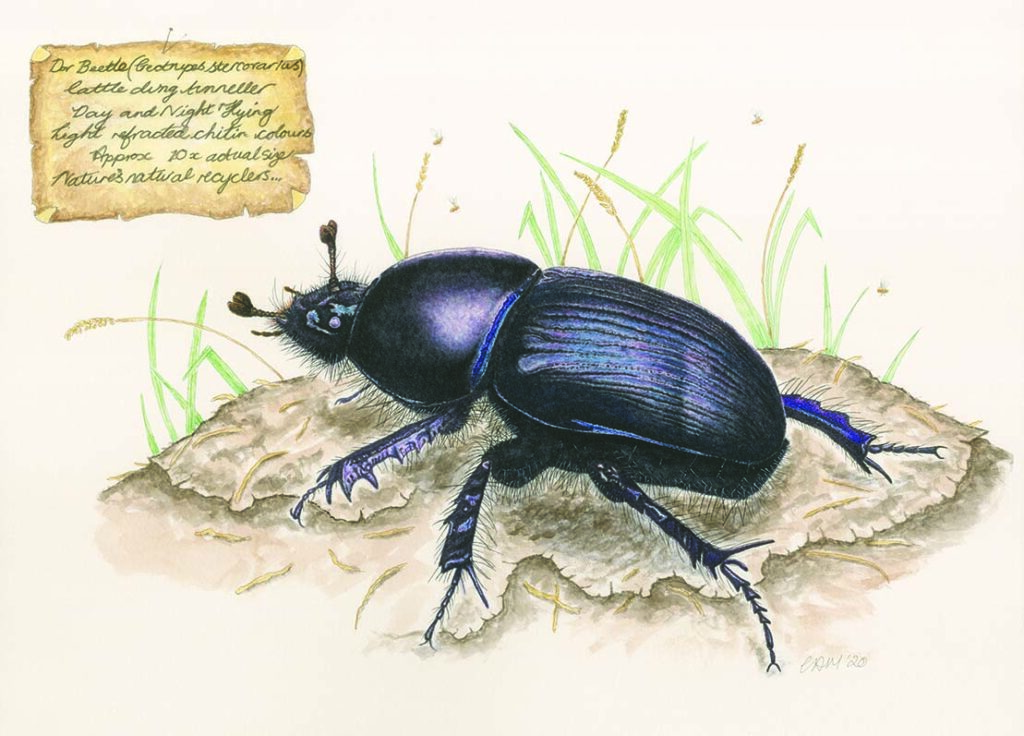
Tell us about the many amazing places and organisations you’ve worked with
Crikey, I’ve been so bloomin’ lucky. I’ve teamed up with organisations, scientists, entomologists and conservationists who have the same aim as me and who understand that art is a fab way to help get the message across to the wider world – that we would all be nowhere without insects. In this light, I’ve taught my insect-art workshops, or given talks at the Natural History Museum, London, the Royal Botanic Gardens, Kew; the Royal Society of Biology; RHS Wisley; the Field Studies Council; the Wetlands Trusts; the National Trust, the Wildlife Trusts, the Royal Society, as well as various Botanic art groups… and I was even asked up to the Queen’s Gallery, Buckingham Place to do a turn.
I’ve also done insect illustrations for Countryfile, British Beekeepers’ Association, Leisure Painter magazine, the Amateur Entomologist’s Society and appeared with Andrew Graham Dixon on his series on the art of the Royal Collections Trust…In fact anyone who stands still long enough will get the 6-legged treatment from me…so beware!
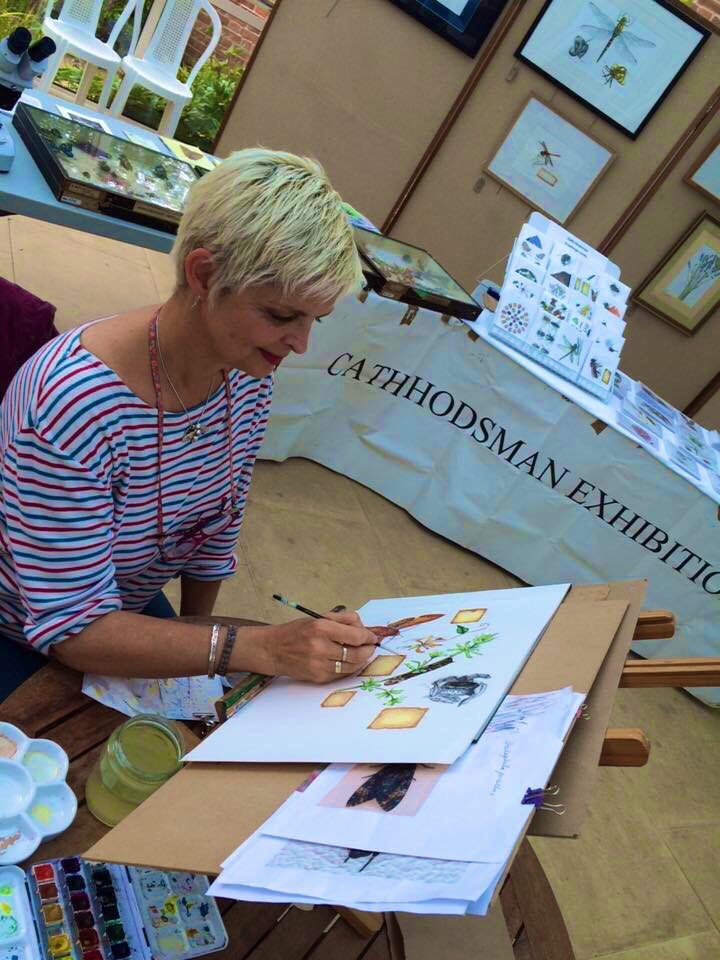
Can anyone join one of your workshops? Even if they are beginners?
Absolutely. I want as many folks as possible to learn about insects and how to use art to pay homage to them. I always go at a beginners pace and give lots of personal attention to those who need it. However, my workshops also attract folks who are more experienced and want to try their skills at painting something a little bit different. In short, there’s something for everyone.
BOOK YOUR PLACE ON THIS WORKSHOP HERE.

What techniques will your students learn on the day?
Primarily, folks will learn how to train their eyes to really look closely at the subject-matter. To note every tiny anatomical detail on the butterfly and to understand its appearance and functionality. On the art side, folks will learn how to take this new-found knowledge and to express it visually, using beautiful watercolours. Students will use very small watercolour brushes to make unique marks to create layers of watercolour paint that will emulate surface texture, capture the drama, colour, intensity, brilliance and beauty of butterflies. It’s a slow process, but one that is very full-filling, enjoyable and worthwhile.
What is your favourite and / or most essential art material or tool that you couldn’t live without?
Oooh, good question…. I guess that has to be tiny watercolour brushes and 100% cotton smooth hot-pressed watercolour paper. There are lots of beautiful watercolours on the market to paint with, which is great but without the precision I get from small brushes, my insect studies would end up looking like they’ve been completed using thick crayons and without the lovely absorbent smooth hot-pressed paper, it would be like painting on a roller-coaster.
Watercolour Sets are available here
